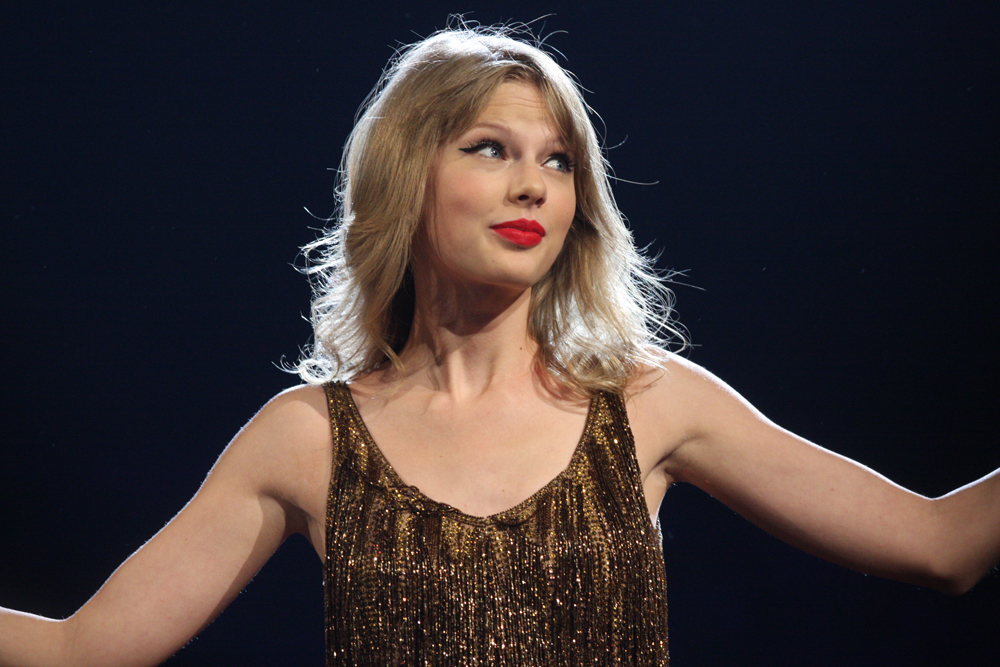Defending Taylor Swift: Navigating the Battle Against Deepfake Images Online

“Defend Taylor Swift from explicit deepfake images circulating online. Explore the battle against deepfakes and the swift response of fans. Learn how tech platforms address the issue and the urgent need for safeguards. Join the fight to protect Taylor Swift’s digital reputation.”
In an era dominated by digital innovation, the insidious rise of deepfake technology has cast its shadow on the personal lives and reputations of public figures. Taylor Swift, the globally acclaimed singer, now finds herself at the forefront of this technological menace. This article aims to delve deep into the multifaceted aspects influencing the proliferation of “Deepfake Explicit Images of Taylor Swift” while exploring the ongoing endeavors to shield her from this digital invasion.
Taylor Swift: Deep Fake Images
The recent surge in explicit deepfake content featuring Taylor Swift has triggered a collective response from her devoted fanbase, affectionately known as the “Swifties.” These ardent supporters swiftly mobilized across social media platforms, spearheading a counteroffensive against the dissemination of inappropriate content. Their actions underscore the mounting challenges faced by tech platforms and anti-abuse groups as they grapple with the formidable task of mitigating the impact of deepfake technology.
Reality Defender, a vigilant deepfake-detecting group, reported a flood of nonconsensual pornographic material primarily circulating on the social media platform X, with sporadic instances appearing on Meta-owned Facebook and other platforms. Despite concerted efforts to remove such content, the widespread dissemination had already reached millions of unsuspecting users, shedding light on the urgency of addressing the deepfake dilemma.

Researchers, in their investigation, identified various AI-generated images, with football-related scenarios being the most widely shared. These graphic depictions not only objectified Swift but also ventured into disturbing territory by portraying violent harm, prompting ethical concerns about the responsible use of deepfake technology.
The increasing prevalence of explicit deepfakes over the past few years can be attributed to the growing accessibility and simplicity of the underlying technology. A 2019 report from AI firm DeepTrace Labs highlighted the disproportionate targeting of women, particularly Hollywood actors and South Korean K-pop singers, signaling a concerning trend that transcends borders and industries.
Taylor Swift, known for confronting issues head-on, displayed a similar resilience in the face of adversity, evident in her 2017 lawsuit against a radio station DJ accused of groping her. The subsequent legal victory, where she was awarded a symbolic $1, emphasized the immeasurable value of standing up against wrongdoing during the height of the MeToo movement. This incident, along with others, paved the way for a trend of symbolic dollar lawsuits, further underlining the significance of holding perpetrators accountable.
The current challenge posed by deepfake pornography aligns with Swift’s history of navigating complex issues, emphasizing the need for swift legal action and intervention to safeguard public figures from digital exploitation.
X, the social media platform where the explicit images gained traction, responded promptly by strictly prohibiting the sharing of non-consensual nude images. However, concerns arise as content moderation teams have witnessed significant reductions since Elon Musk assumed control of the platform in 2022. This raises questions about the platform’s ability to effectively combat the spread of explicit deepfake content.
Meta, the parent company of Facebook, issued a condemnation of the explicit content and pledged to take appropriate action to remove it from their platforms. The response from these tech giants underscores the pressing need for addressing the deepfake issue comprehensively and implementing robust content moderation measures.

As the incident involving Taylor Swift unfolds, it brings to the forefront the broader necessity for safeguards against the misuse of deepfake technology. Microsoft, a prominent provider of AI services, is currently investigating whether its tools were misused and reaffirms its commitment to preventing the generation of harmful content.
The gravity of the situation was further emphasized when Microsoft CEO Satya Nadella, in an interview on “NBC Nightly News,” acknowledged the alarming nature of deepfake incidents. He stressed the urgency in establishing AI safeguards, recognizing the need for swift action to curb the proliferation of misleading content in the digital realm.
Various AI models, such as Stable Diffusion, Midjourney, and OpenAI’s DALL-E, have been implicated in the creation of these explicit deepfakes. OpenAI, in response, asserts that it has safeguards in place to limit the generation of harmful content, refusing requests that specifically target public figures by name, including Taylor Swift.
Microsoft, offering an image-generator partly based on DALL-E, expressed its commitment to investigating potential misuse of its tool. Like other commercial AI services, Microsoft explicitly prohibits the generation of adult or non-consensual intimate content, with repeated violations leading to loss of access to the service.
Federal lawmakers, recognizing the pervasive nature of deepfake incidents, have introduced bills aimed at implementing better protections. U.S. Rep. Yvette D. Clarke, a Democrat from New York, has proposed legislation requiring creators to digitally watermark deepfake content. She emphasizes that the incident involving Taylor Swift is more common than people realize, especially considering the advancements in generative AI that facilitate the creation of increasingly realistic deepfakes at a fraction of the cost.

U.S. Rep. Joe Morelle, another New York Democrat, is pushing a bill that would criminalize sharing deepfake porn online. He acknowledges the disturbing nature of what happened to Swift and highlights the growing pervasiveness of deepfake incidents across the internet, emphasizing that while the images may be fake, their impacts are undeniably real.
In conclusion, the battle against “Deepfake Explicit Images of Taylor Swift” demands a nuanced and multi-pronged approach. Technological safeguards, legal interventions, and heightened awareness among the public and platform operators are essential components of an effective strategy. Swift’s fans and concerned stakeholders must persevere in their efforts to protect public figures from the potentially damaging consequences of deepfake technology.
As the digital landscape evolves, it becomes increasingly evident that the responsible use of AI and stringent regulations are imperative to prevent the misuse of powerful technologies. The incident involving Taylor Swift serves as a poignant reminder of the real-world impact of fake images, compelling society to confront the challenges posed by the dark side of technological advancements. The collective response to this menace will undoubtedly shape the future of how we navigate the delicate intersection of technology, privacy, and celebrity in the digital age.



Pingback: Top 30 Countries for Quality Living in 2024 - Insights of USA